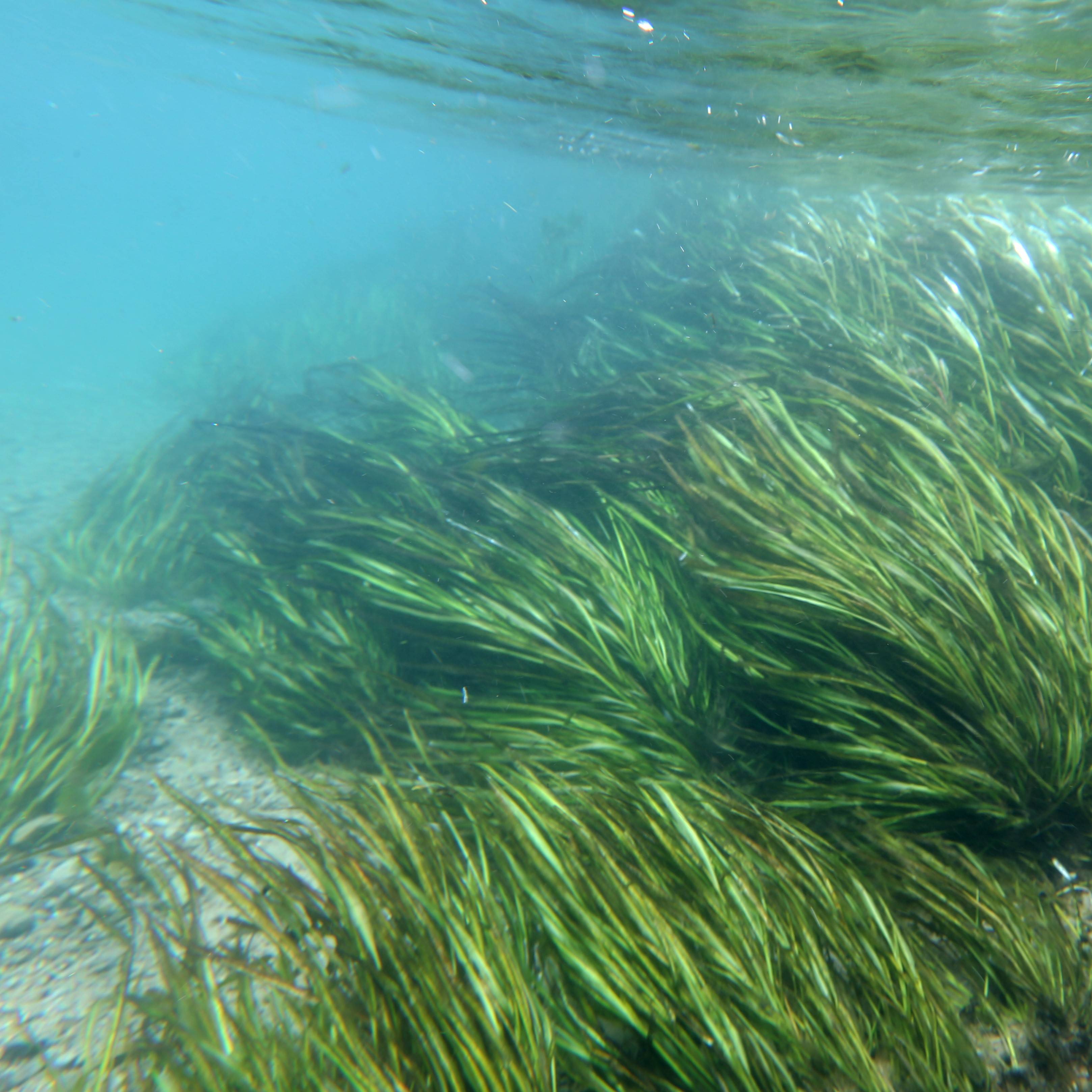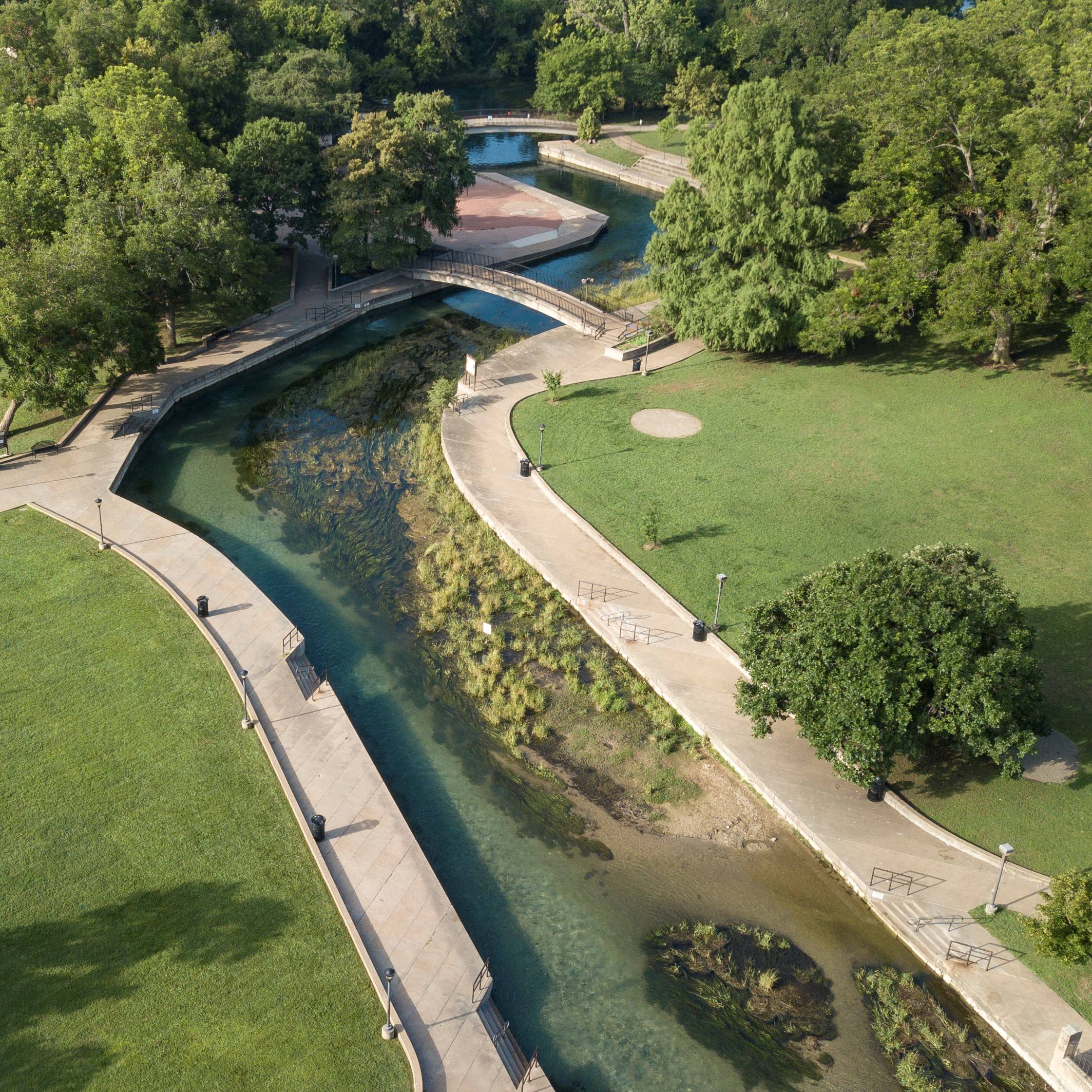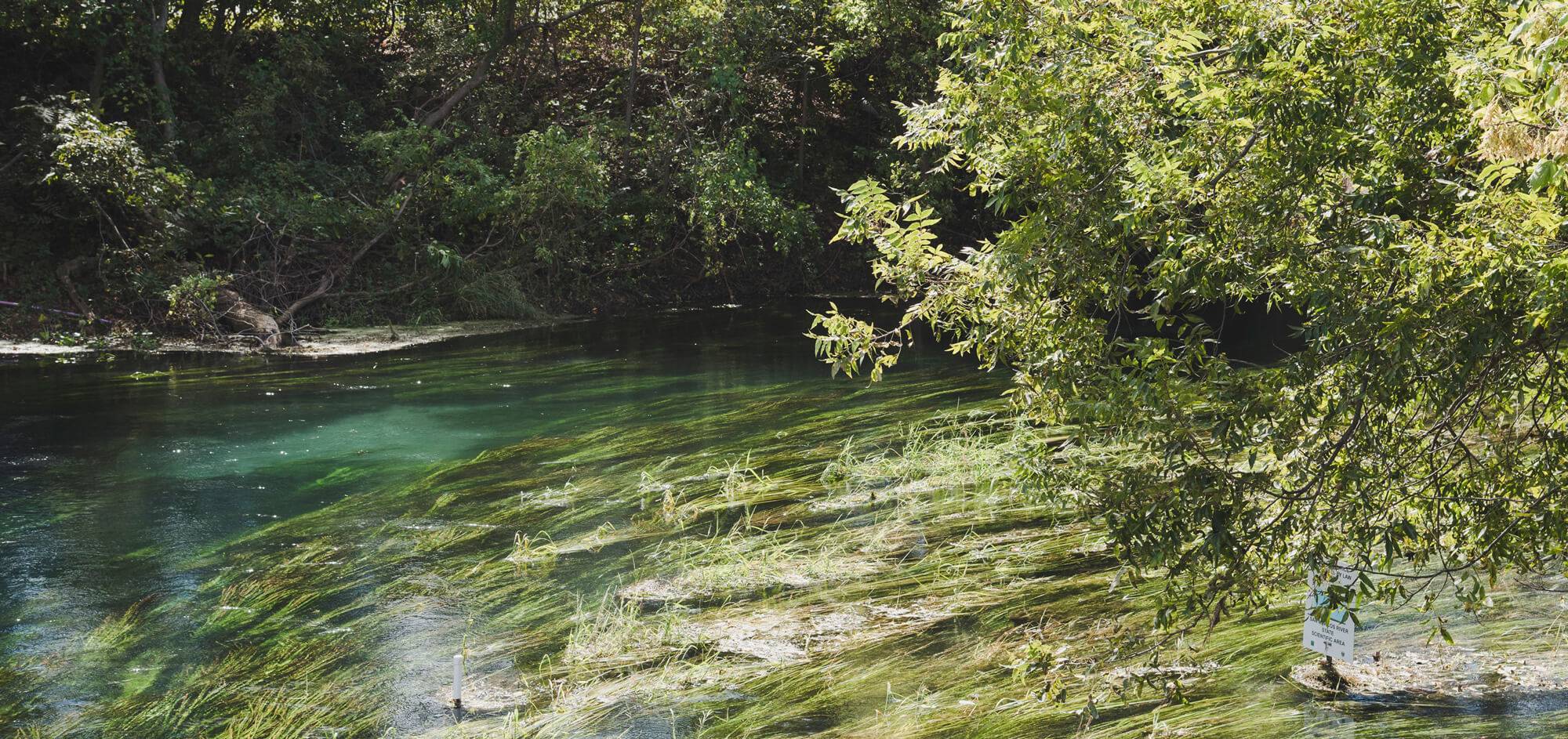Importance of Stormwater
Stormwater runoff can have a big impact on waterbodies, especially in areas of high impervious cover, such as TXST. Although TXST is a beautiful and green campus, there are still many roads, parking lots, roofs, and sidewalks on campus that contribute to increased levels of stormwater runoff. This stormwater will pick up any items that have been left behind, including pollutants, and direct them into the nearest waterbody, such as Spring Lake or the San Marcos River. Both of these waterbodies are highly sensitive habitats that need to be protected from the effects of polluted stormwater runoff.
Why Prevent Stormwater Pollution?
Vulnerable Species

The Edward's Aquifer, upper San Marcos River, and Spring Lake are home to 7 endangered species and 1 threatened species. Some of these species are endemic, meaning they can only be found in these specific water bodies. With increased urban population growth, these species have been threatened by depleted water levels and increased stormwater pollution. To ensure the future of these species, it is important that stormwater pollution be prevented.
Respect Downstream Neighbors

The San Marcos River may begin in San Marcos, but that is not where it ends. In fact, the San Marcos River flows southeast to join the Blanco River and eventually flows into the Guadalupe River before reaching the coast. This means that anything we do to impact the river here at the headwaters will impact those downstream of us. To show respect to our downstream neighbors, it's important that we do our part to prevent stormwater pollution.
Recreational Opportunities

The San Marcos River has been a beloved spot for recreational activities for many generations. Whether it is swimming, paddle boarding, or tubing, residents, students, faculty, staff, and visitors alike all enjoy the recreational opportunities the San Marcos River has to offer. To ensure that the river remains safe for contact recreation for future generations to come, it is important that we do our part to prevent stormwater pollution.
Drinking Water

In order to produce drinking water, water is oftentimes pulled from surface water or groundwater resources. The water will be transported to a treatment plant where it will undergo treatment to ensure it is safe to drink. However, when surface water and groundwater become polluted, this can make it harder and more expensive to treat the water. By preventing stormwater pollution, we can do our part to keep drinking water easily treatable.
